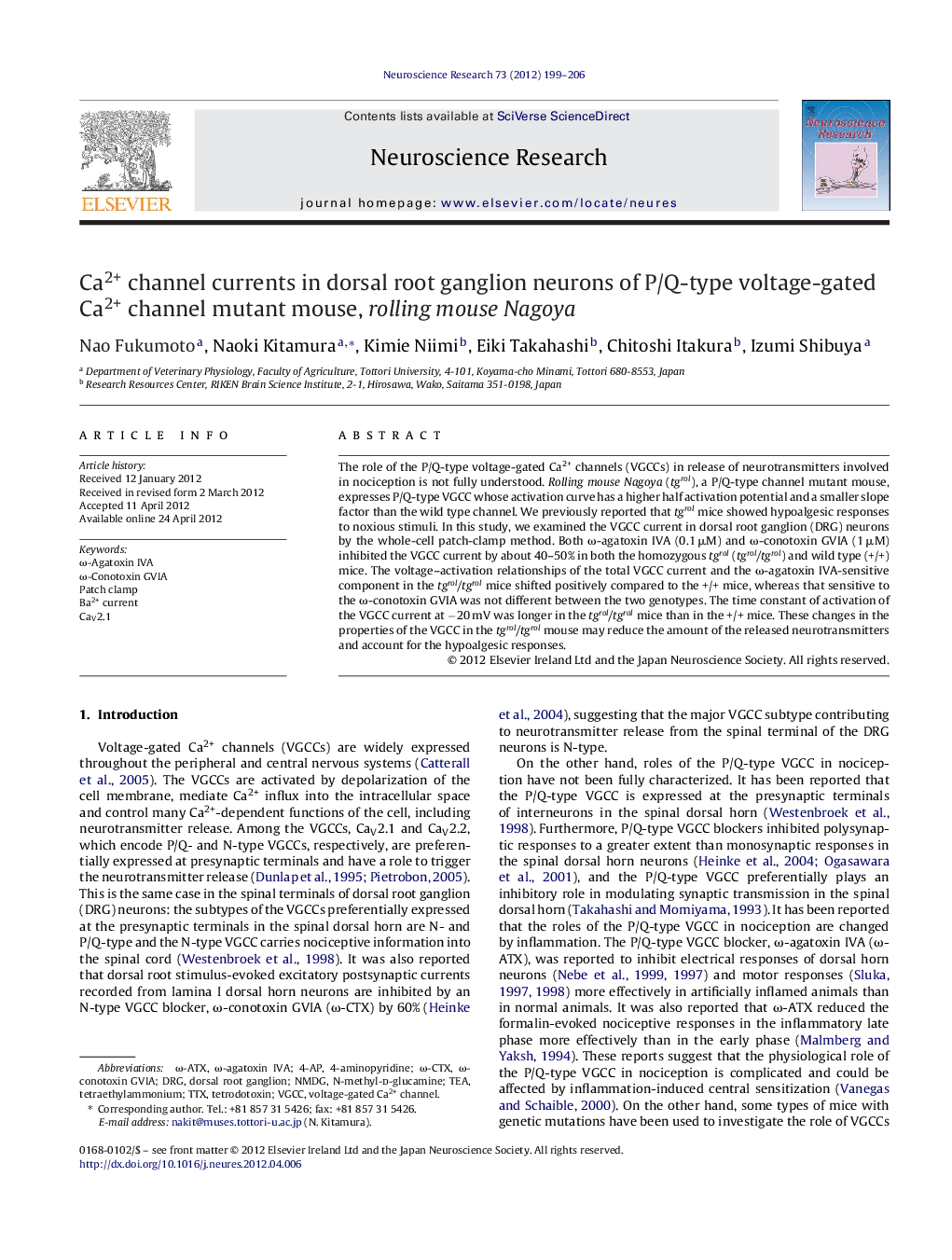| Article ID | Journal | Published Year | Pages | File Type |
|---|---|---|---|---|
| 4351491 | Neuroscience Research | 2012 | 8 Pages |
The role of the P/Q-type voltage-gated Ca2+ channels (VGCCs) in release of neurotransmitters involved in nociception is not fully understood. Rolling mouse Nagoya (tgrol), a P/Q-type channel mutant mouse, expresses P/Q-type VGCC whose activation curve has a higher half activation potential and a smaller slope factor than the wild type channel. We previously reported that tgrol mice showed hypoalgesic responses to noxious stimuli. In this study, we examined the VGCC current in dorsal root ganglion (DRG) neurons by the whole-cell patch-clamp method. Both ω-agatoxin IVA (0.1 μM) and ω-conotoxin GVIA (1 μM) inhibited the VGCC current by about 40–50% in both the homozygous tgrol (tgrol/tgrol) and wild type (+/+) mice. The voltage–activation relationships of the total VGCC current and the ω-agatoxin IVA-sensitive component in the tgrol/tgrol mice shifted positively compared to the +/+ mice, whereas that sensitive to the ω-conotoxin GVIA was not different between the two genotypes. The time constant of activation of the VGCC current at −20 mV was longer in the tgrol/tgrol mice than in the +/+ mice. These changes in the properties of the VGCC in the tgrol/tgrol mouse may reduce the amount of the released neurotransmitters and account for the hypoalgesic responses.
► We recorded VGCC currents in DRG neurons of rolling mouse Nagoya. ► Voltage–activation curve of VGCC currents shifted positively in the mutant mice. ► This shift was caused by the ω-Agatoxin IVA-sensitive component of VGCC current. ► The τ of activation at −20 mV was longer in the mutant mice. ► These changes in the properties of VGCC may account for the hypoalgesic responses.
